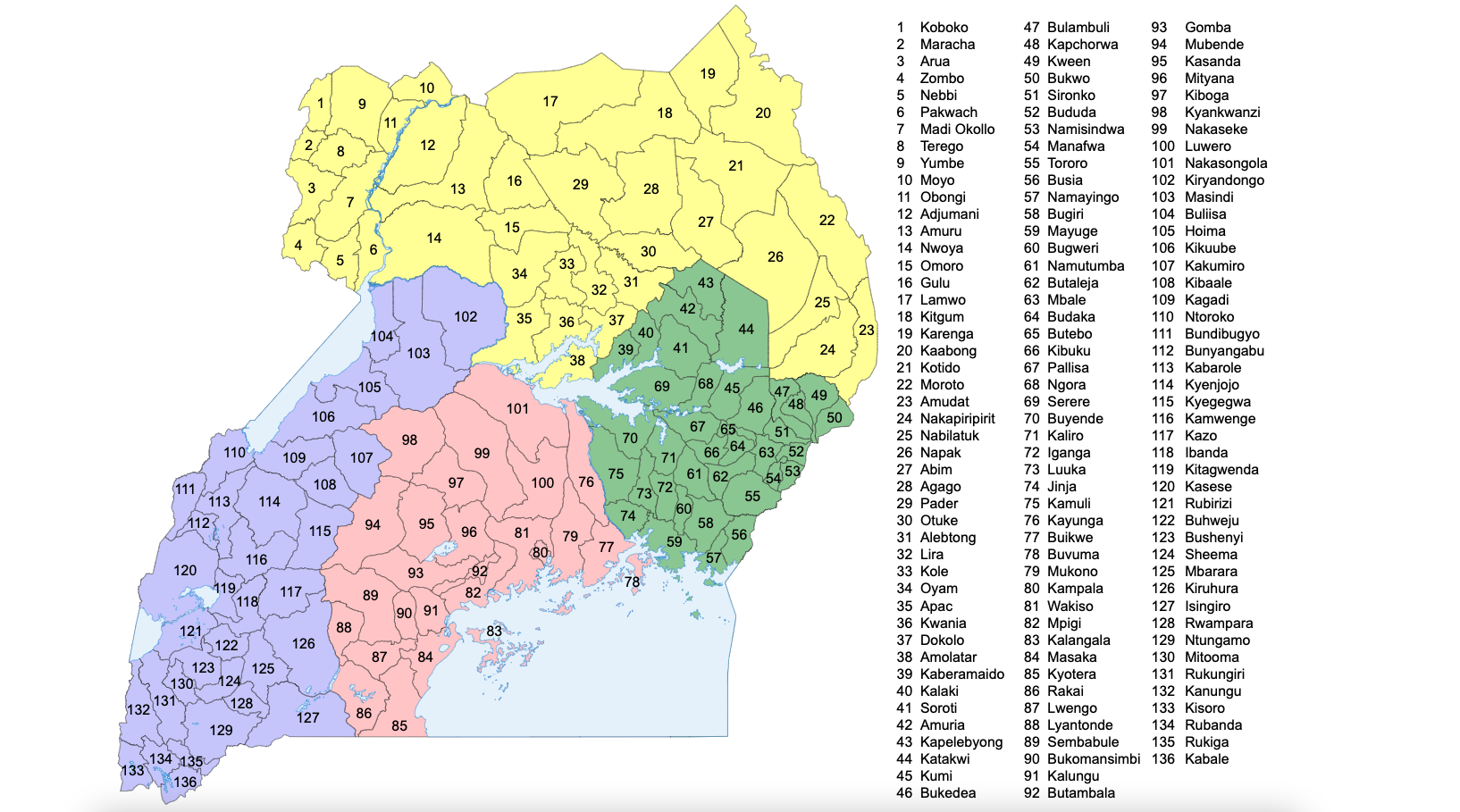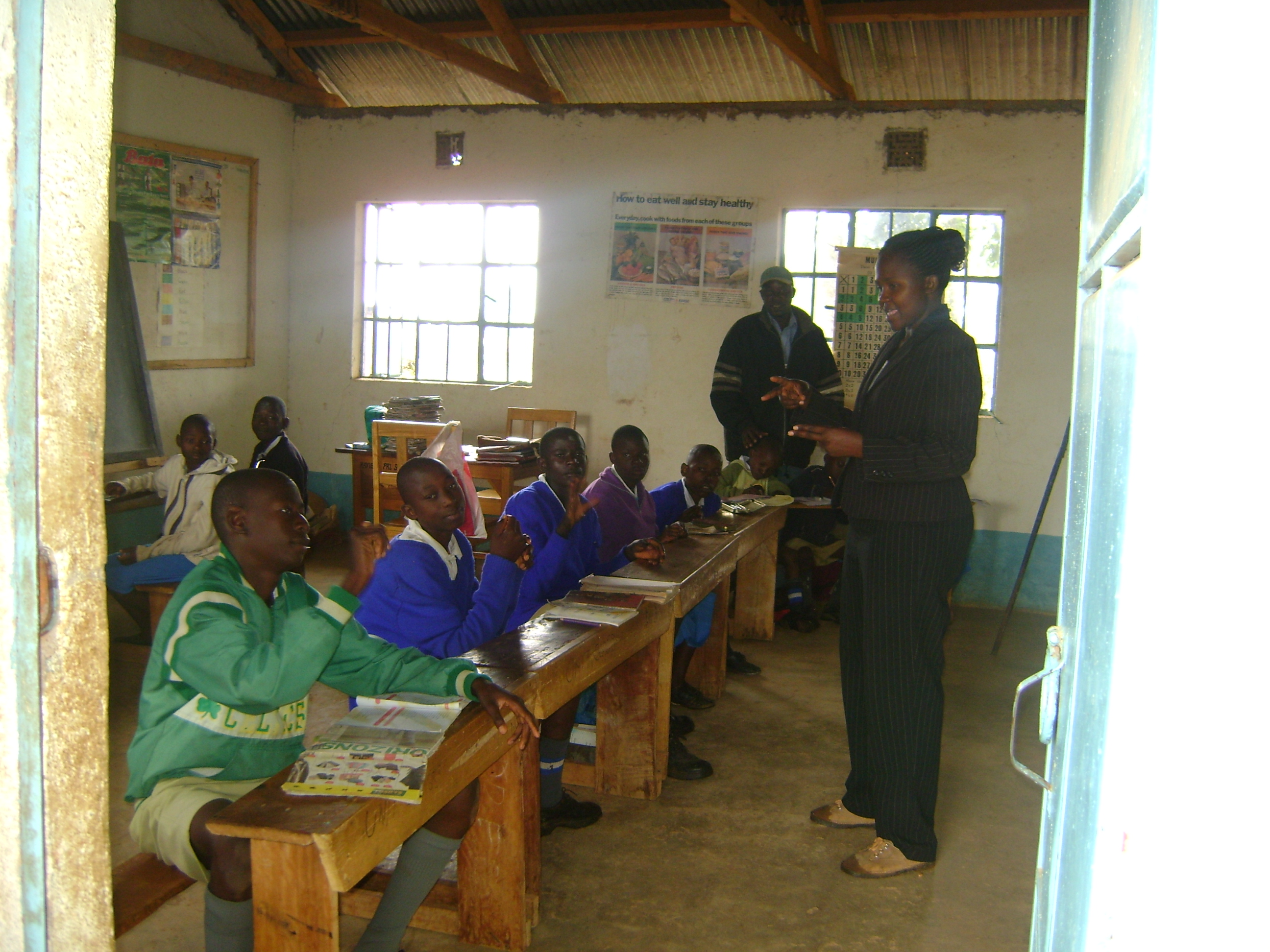|
Ugandan Sign Language
Ugandan Sign Language (USL) is the deaf sign language of Uganda. History Uganda has had schools for deaf children since 1959. In 1973, the Uganda National Association of the Deaf (UNAD) was created. The first generation of students in deaf schools used home signs that evolved to form USL. In 1994, the first training manual for the language was published, and several dictionaries have been published since then. Uganda was the second country in the world to recognize sign language in its constitution, in 1995. Deaf politician was elected to the Parliament of Uganda in 1996. He is the chairman of UNAD. Linguistics USL has influences from American Sign Language, British Sign Language, Kenyan Sign Language, the first two from the language of instruction in early classrooms, and the latter from deaf Ugandans who went to Kenya for higher education. It is intelligible by users of KSL. Its grammar, pronunciation, and Fingerspelling, manual alphabet are influenced by English language, ... [...More Info...] [...Related Items...] OR: [Wikipedia] [Google] [Baidu] |
Uganda
Uganda, officially the Republic of Uganda, is a landlocked country in East Africa. It is bordered to the east by Kenya, to the north by South Sudan, to the west by the Democratic Republic of the Congo, to the south-west by Rwanda, and to the south by Tanzania. The southern part includes a substantial portion of Lake Victoria, shared with Kenya and Tanzania. Uganda is in the African Great Lakes region, lies within the Nile basin, and has a varied equatorial climate. , it has a population of 49.3 million, of whom 8.5 million live in the capital and largest city, Kampala. Uganda is named after the Buganda, Buganda kingdom, which encompasses a large portion of the south, including Kampala, and whose language Luganda is widely spoken; the official language is English. The region was populated by various ethnic groups, before Bantu and Nilotic groups arrived around 3,000 years ago. These groups established influential kingdoms such as the Empire of Kitara. The arrival of Arab trade ... [...More Info...] [...Related Items...] OR: [Wikipedia] [Google] [Baidu] |
Rwandan Sign Language
It is not clear what the sign language or languages are in Rwanda. In 2006, a dictionary project was started to standardize Rwandan Sign Language ( or ) published in 2009. However, the project was an incomplete effort, and an expanded dictionary, based on signs common throughout the country, was started in 2013. The latter project description implies that these are dialects of a single language, but that is uncertain. Interpreter programs are available in Uganda; it is unknown whether this means that Rwandan Sign Language is related to Ugandan Sign Language Ugandan Sign Language (USL) is the deaf sign language of Uganda. History Uganda has had schools for deaf children since 1959. In 1973, the Uganda National Association of the Deaf (UNAD) was created. The first generation of students in deaf sch .... [...More Info...] [...Related Items...] OR: [Wikipedia] [Google] [Baidu] |
Language Interpretation
Interpreting is translation from a spoken or signed language into another language, usually in real time to facilitate live communication. It is distinguished from the translation of a written text, which can be more deliberative and make use of external resources and tools. The most common two modes of interpreting are simultaneous interpreting, which is done at the time of the exposure to the source language, and consecutive interpreting, which is done at breaks to this exposure. Interpreting is an ancient human activity which predates the invention of writing. History Historiography Research into the various aspects of the history of interpreting is quite new. For as long as most scholarly interest was given to professional conference interpreting, very little academic work was done on the practice of interpreting in history, and until the 1990s, only a few dozen publications were done on it. Considering the amount of interpreting activities that is assumed to have oc ... [...More Info...] [...Related Items...] OR: [Wikipedia] [Google] [Baidu] |
Signed English
Manually Coded English (MCE) is an umbrella term referring to a number of invented manual codes intended to visually represent the exact grammar and morphology of spoken English. Different codes of MCE vary in the levels of adherence to spoken English grammar, morphology, and syntax. MCE is typically used in conjunction with direct spoken English. Manually coded English systems Manually coded English (MCE) is the result of language planning efforts in multiple countries, especially the United States in the 1970s. Four systems were developed in attempts to represent spoken English manually; Seeing Essential English (also referred to as Morphemic Signing System (MSS) or SEE-1), Signing Exact English (SEE-2 or SEE), Linguistics of Visual English (LOVE), or Signed English (SE). System developers and educators disagree on the relative accuracy and appropriateness of these four representations. MCE is different from American Sign Language, which is a natural language with a distinc ... [...More Info...] [...Related Items...] OR: [Wikipedia] [Google] [Baidu] |
Diane Brentari
Diane Brentari is an American linguist who specializes in sign languages and American Sign Language in particular. Education and career Brentari received her PhD in Linguistics from the University of Chicago in 1990. Her dissertation, entitled ''Theoretical Foundations of American Sign Language Phonology'', was supervised by John Goldsmith. She is the Mary K. Werkman Professor of Linguistics and co-director of the Center for Gesture, Sign, and Language at the University of Chicago. She held a position at University of California-Davis, and then led the Sign Language program at Purdue University before coming to the University of Chicago in 2011. She is also a Distinguished Visiting Professor at The Hebrew University of Jerusalem. Brentari's research interests address the sign language grammars of Deaf communities—how these languages emerge, and the degree of variation that exists among them. She has analyzed the formal, cognitive, and cultural dimensions that motivate the si ... [...More Info...] [...Related Items...] OR: [Wikipedia] [Google] [Baidu] |
Languages Of Uganda
Language is a structured system of communication that consists of grammar and vocabulary. It is the primary means by which humans convey meaning, both in spoken and signed forms, and may also be conveyed through writing. Human language is characterized by its cultural and historical diversity, with significant variations observed between cultures and across time. Human languages possess the properties of productivity and displacement, which enable the creation of an infinite number of sentences, and the ability to refer to objects, events, and ideas that are not immediately present in the discourse. The use of human language relies on social convention and is acquired through learning. Estimates of the number of human languages in the world vary between and . Precise estimates depend on an arbitrary distinction (dichotomy) established between languages and dialects. Natural languages are spoken, signed, or both; however, any language can be encoded into secondary media ... [...More Info...] [...Related Items...] OR: [Wikipedia] [Google] [Baidu] |
Bimodal Bilingualism
Bimodal bilingualism is an individual or community's bilingual competency in at least one oral language and at least one sign language, which utilize two different modalities. An oral language consists of a vocal-aural modality versus a signed language which consists of a visual-spatial modality. A substantial number of bimodal bilinguals are children of deaf adults (CODA) or other hearing people who learn sign language for various reasons. Deaf people as a group have their own sign language(s) and culture that is referred to as Deaf, but invariably live within a larger hearing culture with its own oral language. Thus, "most deaf people are bilingual to some extent in n orallanguage in some form". In discussions of multilingualism in the United States, bimodal bilingualism and bimodal bilinguals have often not been mentioned or even considered. This is in part because American Sign Language, the predominant sign language used in the U.S., only began to be acknowledged as a natural ... [...More Info...] [...Related Items...] OR: [Wikipedia] [Google] [Baidu] |
Districts Of Uganda
As of 1 July 2020, Uganda is divided into 135 districts plus the capital city of Kampala, which are grouped into four Regions of Uganda, geographic regions. Since 2005, the Ugandan government has been in the process of dividing districts into smaller units. This decentralization is intended to prevent resources from being distributed primarily to chief towns and leaving the remainder of each district neglected. Each district is further divided into Counties of Uganda, counties and municipalities, and each county is further divided into Sub-counties of Uganda, sub-counties. The head elected official in a district is the chairperson of the Local Council (Uganda), Local Council five (usually written with a Roman numeral V). Districts created since 2015 In September 2015, the Parliament of Uganda created 23 new districts, to be phased in over the next four years. ;Notes: See also * List of constituencies in Uganda * Regions of Uganda * Uganda Local Governments ... [...More Info...] [...Related Items...] OR: [Wikipedia] [Google] [Baidu] |
Deaf Education
Deaf education is the education of students with any degree of hearing loss or deafness. This may involve, but does not always, individually-planned, systematically-monitored teaching methods, adaptive materials, accessible settings, and other interventions designed to help students achieve a higher level of self-sufficiency and success in the school and community than they would achieve with a typical classroom education. There are different language modalities used in educational setting where students get varied communication methods. A number of countries focus on training teachers to teach deaf students with a variety of approaches and have organizations to support and advocate for deaf students. Identifying deaf students Children may be identified as candidates for deaf education from their audiogram or medical history. Hearing loss is generally described as slight, mild, moderate, severe, or profound, depending upon how well a person can hear the intensities of frequenc ... [...More Info...] [...Related Items...] OR: [Wikipedia] [Google] [Baidu] |
Mouthing
In sign language, mouthing is the production of visual syllables with the mouth while signing. That is, signers sometimes say or mouth a word in a spoken language at the same time as producing the sign for it. Mouthing is one of the many ways in which the face and mouth is used while signing. Although not present in all sign languages, and not in all signers, where it does occur it may be an essential (that is, phonemic) element of a sign, distinguishing signs which would otherwise be homophones; in other cases a sign may seem to be flat and incomplete without mouthing even if it is unambiguous. Other signs use a combination of mouth movements and hand movements to indicate the sign; for example, the ASL sign for includes a mouth gesture where the mouth is slightly open. Mouthing often originates from oralist education, where sign and speech are used together. Thus mouthing may preserve an often abbreviated rendition of the spoken translation of a sign. In educated Ugandan Sign ... [...More Info...] [...Related Items...] OR: [Wikipedia] [Google] [Baidu] |
Initialized Sign
In sign language, an initialized sign is one that is produced with a handshape(s) that corresponds to the fingerspelling of its equivalent in the locally dominant oral language, based on the respective manual alphabet representing that oral language's orthography. The handshape(s) of these signs then represent the initial letter of their written equivalent(s). In some cases, this is due to the local oral language having more than one equivalent to a basic sign. For example, in ASL, the signs for "class" and "family" are the same (a basic sign for 'group of people'), except that "class" is signed with a 'C' handshape, and "family" with an 'F' handshape. In other cases initialization is required for disambiguation, though the signs are not semantically related. For example, in ASL, "water" is signed with a 'W' handshape touching the mouth, while "dentist" is similar apart from using a 'D' handshape. In other cases initialization is not used for disambiguation; the ASL sign for "elevat ... [...More Info...] [...Related Items...] OR: [Wikipedia] [Google] [Baidu] |




